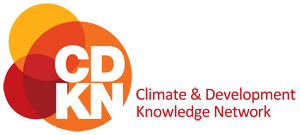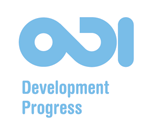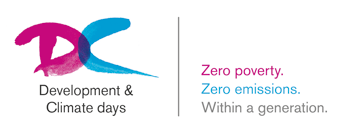
Sound Art Miniatures
CEIArtE – UNTREF
Red Cross/Red Crescent Climate Centre
Climate and Development Knowledge Network
International Institute for Environment and Development (IIED)
Overseas Development Institute (ODI)
The Electronic Arts Experimentation and Research Centre (CEIArtE) of the National University of Tres de Febrero in Argentina, the Red Cross/Red Crescent Climate Centre, the Climate and Development Knowledge Network (CDKN), International Institute for Environment and Development (IIED) and Overseas Development Institute (ODI), with support of the Balance-Unbalance international project, calls for participation in the 2nd international competition  for the creation of miniatures of sound art related to the climate change effects and the global environmental crisis.
for the creation of miniatures of sound art related to the climate change effects and the global environmental crisis.
For this contest, we understand by sound art miniatures, creations of sound art/music involving the use of new technologies, whose products can fit into what is known as soundscapes, electroacoustic /acousmatic music sonorizations and sonifications.OBJECTIVES:
The Red Cross/Red Crescent Climate Centre aims to help to reduce, through diverse humanitarian actions, the consequences of climate change and extreme weather events.
This contest has two principal objectives:
1. To participate in the activities that the Red Cross/Red Crescent Climate Centre realize for different regions of all the world.
How? In this case through the sound art miniatures. It is very important for the Climate Centre to have art material that can support their actions (such as participative workshops, educational videos and collaborative learning games developed to improve the understanding and prevention of disasters). It’s a way to stop being spectators and help thinking in what each one can contribute.
2. To improve knowledge about the environmental crisis and to promote awareness about the effects of climate change.
Therefore we request, to those who wish participate in this call, to read and watch the following documents:
- “Climate Guide”: www.climatecentre.org/downloads/File/reports/RC_climateguide_ES_web.pdf
- “Climate Centre Publications”: www.climatecentre.org/site/publications/85
- “Climate Change and its Humanitarian Impacts”: download PDF
- “An Inconvenient Truth”: www.imdb.com/title/tt0497116/
We also suggest to check out regularly this website where new reference materials about this topic will be added. http://www.ceiarteuntref.edu.ar.
THEME:
The proposals should be focused on the following theme:
| CATEGORY A: «Sea Level Rise» | CATEGORY B: «Zero poverty. Zero emissions. Within a generation» |
| This category is related to the “sea level rise” as phenomenon, its causes and consequences, at global and local levels.Thanks to heat-trapping greenhouse gases, especially carbon dioxide (CO2) pumped into the atmosphere by the burning of fossil fuels, global temperatures are more than one degree F higher than they were 100 years ago. Since water expands as it warms, the oceans take up more space than they once did, and the only direction they can expand are up and out. Warmer temperatures also make glaciers and land-based ice sheets melt, and make tidewater glaciers — glaciers that reach the ocean — slide more rapidly into the sea and calve more icebergs. In both cases, water that had been trapped on land enters the ocean, in either solid or liquid form, making sea level rise even more. Scientists have also watched levels of greenhouse gases in the atmosphere rise steadily, thanks largely to the growing worldwide demand for energy. (1) There are three processes that are known to contribute to Sea Level Rise:(2) a)Thermal expansion. b)Loss of land ice. c)Losses of the Greenland and/or Antarctic ice sheets.IMPACTS OF SEA LEVEL RISE: Different places will experience different local rates. (1) – Degradation: coastal erosion, loss of mangrove forests, loss of protective coral reefs, sand beaches and agricultural land; salt wáter intrusion and salinisation of freshwater aquifers. Long before migration becomes the only option, erosion and rising tides will compromise infrastructure, settlements and the economic well-being of entire nations.– Flooding: submersion of land and increased riverine flooding.New coastlines that increase exposure to hurricanes and storm surges. (3) – Biological diversity exposed to greater risk (Lewis, 1990; Maul, 1993). Potential feedbacks: a change in land cover (from land to water) will alter albedo and further contribute to a changing climate. E.g.:In Miami, the land is almost flat, with millions of people living there. In still others, such as New Orleans, large areas actually lie below the current sea level — and will lie further below as sea level goes up. In places with porous bedrock, like much of Florida, the rising sea can intrude on underground aquifers of fresh water that lie near the coast. In places where rivers and canals flow into the ocean, they’ll have more trouble draining, especially after major rainstorms, as the sea rises higher. Local flooding could become more common. In many places, only a few vertical inches separate what would be today called a once-in-a-century flood, from what would be called a once-in-a-decade floodWe strongly suggest, to those who wish participate in this category, to read the information at the linkhttp://sealevel.climatecentral.org/basics REFERENCES(1) http://sealevel.climatecentral.org/basics(2) “Climate Change and its Humanitarian Impacts”, Lezlie C. Erway Morinière, Richard Taylor, Mohamed Hamza, Tom Downing. Stockholm Environment Institute. Oxford, UK. November 2009 Page 40.(3) “Climate Change and its Humanitarian Impacts”, Lezlie C. Erway Morinière, Richard Taylor, Mohamed Hamza, Tom Downing. Stockholm Environment Institute. Oxford, UK. November 2009 Page 40 | The effects of climate change hit poor people the hardest. But the solutions to the climate crisis that can be implemented at local level – like planting and conserving forests, adopting cleaner and greener technologies, slashing pollution – can be good for people’s health and livelihoods and give them better lives today. These are two sides of the same coin. We encourage you to explore the relationship between climate change and poverty – how unchecked, these problems compact each other; how tackled together, we can forge solutions.Climate change threatens to reverse hard-earned gains to end extreme poverty. But sustainable development has the potential to lift people out of poverty and protect the environment. In 2010, 700 million fewer people lived in extreme poverty than in 1990. We are now able to envision the end of extreme poverty — people living on less than $1.25 (PPP or purchasing power parity) a day — within a generation. At the same time, the International Panel on Climate Change 5th Assessment has advised that we must achieve zero net greenhouse-gas emissions by 2100 (offsetting any remaining emissions by removing an equivalent amount from the atmosphere) in order to keep the world within an average 2°C rise in global mean temperature. This is necessary to avoid nearly all catastrophic climate change scenarios. We know that some effects of climate change are inevitable and others highly likely. Far-sighted and far-reaching adaptation to climate change to increase people’s resilience must now form a fundamental part of any poverty-eradication strategy. We will also need to fight poverty in a way that will lead us to zero net emissions, or we will lose the ground we have gained on poverty reduction as the earth’s climate spins increasingly out of control. Furthermore, some pathways to reducing emissions by 2100 could result in an abrupt economic slowdown that could hinder the eradication of extreme poverty unless appropriate measures are taken. We are at a pivotal moment: an international agreement on climate change (under the United Nations Framework Convention on Climate Change or UNFCCC), the post-2015 sustainable development goals (under the United Nations Open Working Group) and a future framework on disaster risk reduction (under the Hyogo-Framework for Action II or HFA2) will all be finalised in 2015. Strong and coherent links between these agreements could ensure that the sustainable development goals and disaster risk-reduction efforts are climate-smart and acknowledge that effective mitigation and adaptation strategies are pivotal to meeting poverty-eradication objectives. These agreements must be integrated and ambitious, and their goals must be delivered with commitment and transparency by the world’s governments, to create development possibilities for the world’s poorest and most vulnerable people. |
The sound art miniatures can include any type of sounds: sounds of nature, sounds of acoustic and/or electronic musical instruments, sounds produced by common or unusual objects and sounds produced or transformed by digital devices. Voices can be also included producing either onomatopoeias or phonemes, or as single words or whole sentences. In the last case, the accepted languages are: English, French and Spanish.
SELECTED WORKS:
1. All the works that the jury understands that fit the needs of the Red Cross/Red Crescent Climate Centre, as they are outlined in the previous section, will have in the official website of the Centre: http://www.climatecentre.org/ a link available to listen to and download the pieces.
2.A subgroup of the sound art miniatures selected for the website will be also used by the Climate Center at least in three workshops to be held in Africa, the Americas, Asia/Pacific and Europe.
It should be understood that there is no predetermined limit to the number of miniatures selected, because the more they can fulfill the role of supporting or attach to the actions of the Climate Center, the more materials may be selected to be used in their activities.
3.Finally, beyond the miniatures selected by the Climate Center to be used in their actions for humanitarian purposes, and put them available on its official website, they can be also linked to other participant projects websites related to this initiative, such as the international project Balance-Unbalance website, the Hexagram-Concordia Center of Research-Creation in Media Arts and Technology of Concordia University in Canada and the Electronic Arts Experimentation and Research Centre (CEIArtE) of the National University of Tres de Febrero of Argentina.
In all cases, the selected works need to have a Creative Commons license that allows these pieces to be freely distributed, identifying in each case their original creators.
POSSIBLE USES:
Below are mentioned some examples of uses for the miniatures:
a) Participative workshops, educational videos and collaborative learning games. These are part of the activities carried out by the Climate Centre which have proved to be effective in community workshops, also for delegates and representatives of the Climate Center in various countries, and executive government members, politicians and administrative employees of hierarchy. See examples with Kenyan farmers: http://www.youtube.com/watch?v=R8eRhS2XnCA&feature=youtu.be and at Oxford University:http://www.youtube.com/watch?v=EA7goLzbU2U
b) At conferences, workshops and symposiums. The miniatures can fulfill multiple functions: support, reinforcement, and even serve as an introduction to certain events. In different circumstances a sound miniature can become the key and determining factor to capture the attention of the participants, especially in major events: as an example, we take the case of a meeting with a lot of speakers and a large audience, in which is required to be focus for several hours on each submission or action.
FORMATS:
In order to participate in this contest, everything stated in this call must be respected, including the following indications and limitations.
– All proposals must be related to the aforementioned themes.
– Do NOT send audio files to any email addresses listed in this call.
– Each participant may submit a maximum of three (3) sound art miniatures.
– The miniatures may have a duration of betweenten (10) seconds and three (3) minutes. The reason of the difference between the minimum and maximum time accepted is to allow the Climate Centre team to have a variety of possible applications for the miniatures.
– File formats accepted are: aif or wav (16 bit, 44.1KHz, stereo). Compressed formats such as mp3 or mp4 are discouraged but can be accepted in case of need.
– Collective creations are accepted.
SUBMITTING YOUR PROPOSAL:
Following this link you will access the submission form:
— ONLINE REGISTRATION —
You must complete one form for each miniature submited. The form shall include the link to the audio file for the jury to listen to each work. Each audio file must be uploaded to the soundcloud website (www.soundcloud.com). Aditionally each sound file must be available for immediate download.
In case of submitting more than one sound miniature, each piece must comply independently with the requirements described.
Each participant must indicate in the soundcloud website that his/her work can be publicly distributed under the Creative Commons license.
TERMS OF USE:
Using a Creative Commons license for each selected sound art miniature allows for publicly distributing and disseminating the works, having the author(s) of the miniature quoted accordingly while the use is not for commercial purpose. The license jurisdiction will be: international. The accepted license for this call is “Recognition – NoComercial – Equal/Share». More details at: http://creativecommons.org
Each sound art miniature selected and available on the official Climate Centre website will appear with the corresponding credits as the artist indicated. Having made clear the noncommercial use of the work by any of the parts involved, any fees or payments of any kind are completely excluded. The use of the miniature will always be binded directly or indirectly with humanitarian principles.
The jury for the selection of the sound art miniatures will be composed by representatives of the organizing institutions: CEIArtE-UNTREF, the Red Cross/Red Crescent Climate Centre, Hexagram-Concordia University. The jury´s decisions are final.
The sole participation in this competition implies full acceptance of all conditions.
See selected works of 1st competition
Related Links:
http://www.climatecentre.org
http://www.balance-unbalance2013.org
http://www.noosabiosphere.org.au/
http://balance-unbalance2011.hexagram.ca
http://creativecommons.org
http://globalfloodmap.org
https://ceiarteuntref.edu.ar/equilibrio
http://cdkn.org/
http://www.balance-unbalance2015.org/
FECHAS IMPORTANTES
Open Call: Friday, February 14th, 2014
Deadline Submissions: Sunday, February 1th, 2015 – 11pm
Selection of miniatures announcement: the results will be made public during the Balance-Unbalance 2015 international conference that will take place at Arizona State University, Arizona, USA, from 27 March to 29 March, 2015.
Miniatures online publication: April, 2015.
Special opportunity: Even if the final deadline to submit sound miniatures for this contest is February 1st of 2015, among the submissions received by midnight November 16th of 2014 – Buenos Aires time, two pieces (one from each category) will be selected and then announced and shared on December 7, in the context of the upcoming UN Climate Conference (UNFCCC COP, Lima, Peru), during the Development and Climate Days event.
INFORMACIÓN Y CONTACTO:
To contact the organizers write to ceiarte@untref.edu.ar, writing in the SUBJECT: Art-Climate [Red Cross Contest #2]







